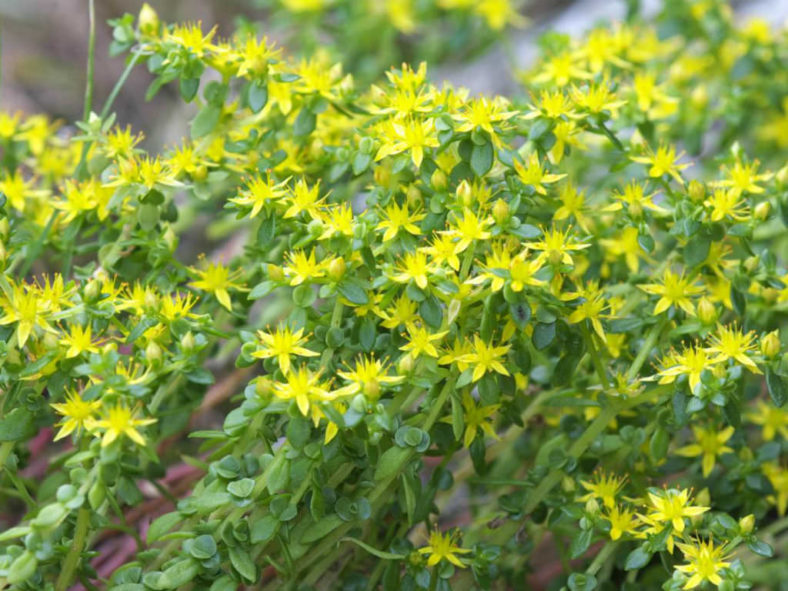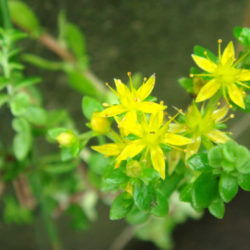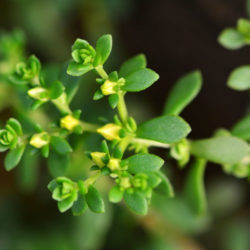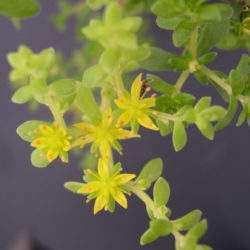Scientific Name
Sedum bulbiferum Makino
Synonym(s)
Sedum alfredii var. bulbiferum, Sedum rosulatobulbosum
Scientific Classification
Family: Crassulaceae
Subfamily: Sempervivoideae
Tribe: Sedeae
Genus: Sedum
Origin
Sedum bulbiferum is native to Japan, Korea, Taiwan, and southeastern China. It grows in the shade of trees on mountains or plains at about 3,280 feet (1,000 m) above sea level.
Description
Sedum bulbiferum is an annual or perennial succulent with erect or ascending stems, often branched from the base, producing bulbils in the axils of the leaves and bracts. The stems can grow up to 8 inches (20 cm) tall before flowering, producing copious quantities of bulbils and then collapsing. The leaves are green, spoon-shaped, and measure up to 0.8 inches (2 cm) long and 0.4 inches (1 cm) wide. The bulbils consist of 1 to 3 pairs of small fleshy scale-like leaves.
The flowers are star-shaped, 5-merous, with yellow petals and orange-yellow anthers, and appear in 3-branched, many-flowered cymes in summer.

Hardiness
USDA hardiness zone 5a to 10b: from −20 °F (−28.9 °C) to 40 °F (+4.4 °C).
How to Grow and Care
When growing Sedum, keep in mind that these plants need very little attention or care. They will thrive in conditions that many other plants thrive in but do just as well in less hospitable areas. They are ideal for that part of your yard that gets too much sun or too little water to grow anything else. A common name for Sedum is Stonecrop because many gardeners joke that only stones need less care and live longer.
Sedum is easily planted. For shorter varieties, simply laying the plant on the ground where you want it to grow is normally enough to get the Sedum plant started there. They will send out roots from wherever the stem is touching the ground and root itself. If you would like to ensure that the plant will start there, you can add a very thin covering of soil. You can break off one of the stems for taller varieties and push it into the ground where you would like to grow it. The stem will root very easily, and a new plant will be established in a season or two.
See more at How to Grow and Care for Sedum.
Links
- Back to genus Sedum
- Succupedia: Browse succulents by Scientific Name, Common Name, Genus, Family, USDA Hardiness Zone, Origin, or cacti by Genus
Photo Gallery
Click on a photo to see a larger version.


